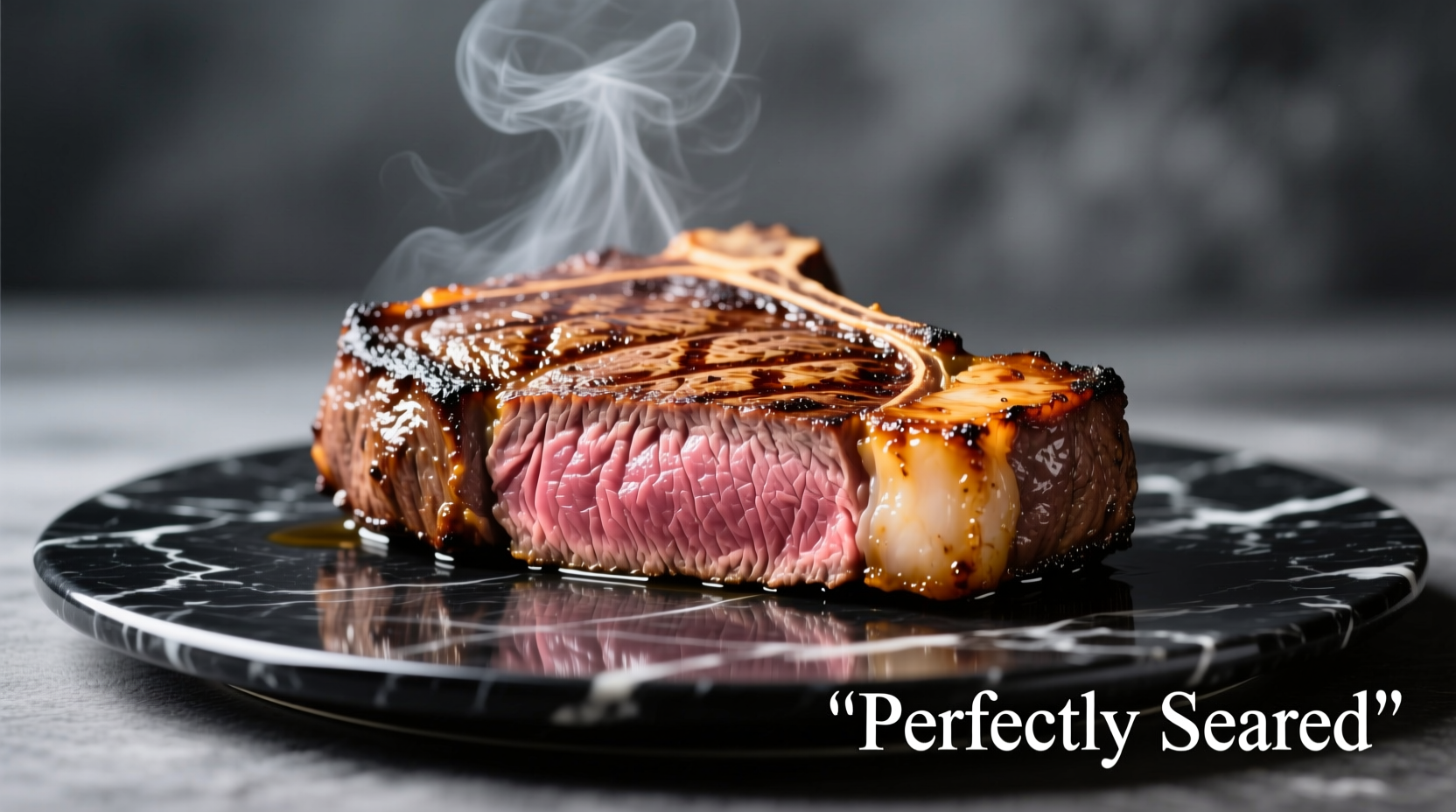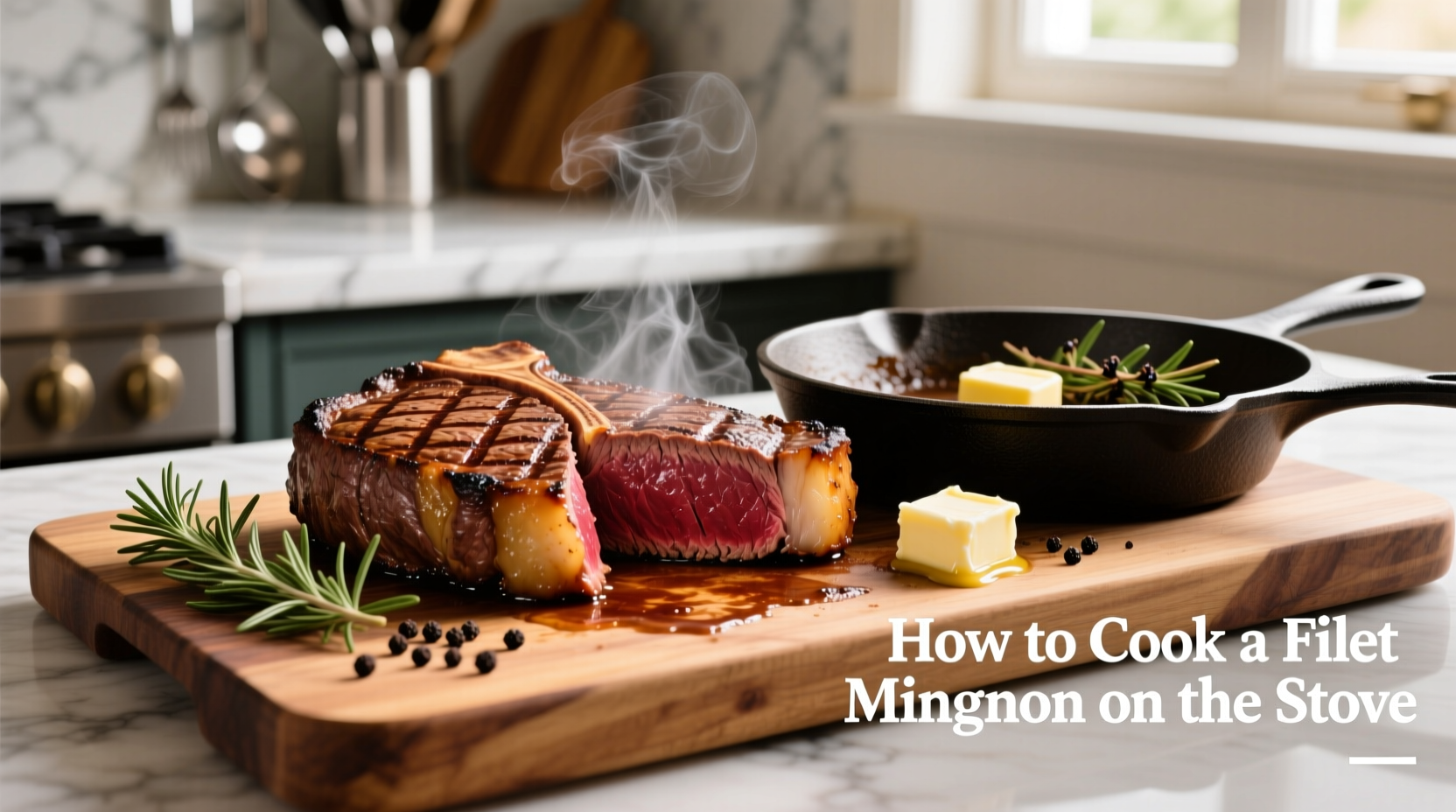Perfectly cook filet mignon on the stove in 15 minutes with this professional technique: Pat steak dry, season generously, sear in smoking hot cast iron for 3-4 minutes per side, add butter and aromatics, then rest 5-10 minutes. Achieve medium-rare at 130-135°F (54-57°C) internal temperature for optimal tenderness and flavor.
Nothing says special occasion like a perfectly cooked filet mignon. As a chef who's prepared thousands of steaks in professional kitchens, I can tell you the stovetop method beats oven-finished versions for developing that crave-worthy crust while maintaining buttery tenderness. Forget complicated equipment - with proper technique, you'll create restaurant-quality results using just a cast iron skillet and basic pantry items.
Why Stovetop Cooking Works Best for Filet Mignon
Filet mignon's delicate marbling requires precise heat control. The stovetop provides immediate temperature adjustment that ovens can't match. According to the Culinary Institute of America's cooking techniques guide, direct radiant heat creates superior Maillard reaction development compared to indirect oven heat, producing richer flavor compounds in this premium cut.
Essential Equipment Checklist
Before starting, gather these critical items:
- 10-12 inch cast iron skillet (preheated 15 minutes)
- Instant-read thermometer (Thermapen recommended)
- Tongs with silicone tips
- Heavy kitchen towel for handling hot pan
- Metal spatula for precise flipping
Professional kitchens avoid non-stick pans for steak - the surface temperature can't reach the 400°F+ needed for proper searing. Cast iron's thermal mass maintains consistent heat during cooking.
Perfect Steak Preparation Protocol
Follow these preparation steps exactly for optimal results:
- Thaw properly: Refrigerate 24 hours for 1.5" thick cut
- Dry thoroughly: Pat with paper towels for 2 minutes
- Season early: Apply 1 tsp kosher salt per pound 45 minutes pre-cook
- Room temperature: Remove from fridge 30 minutes before cooking
- Final dry: Pat again immediately before searing
This drying process creates the dry surface essential for crust formation. Moisture is the enemy of proper searing - it causes steaming instead of browning.
Stovetop Cooking Timeline: Step-by-Step
Follow this precise cooking sequence for perfect results:
| Time | Action | Visual Cues |
|---|---|---|
| 0-3 min | Sear first side, undisturbed | Deep brown crust forming, audible sizzle |
| 3-4 min | Flip using tongs, sear second side | Release from pan when ready to flip |
| 4-7 min | Add butter, garlic, herbs; tilt pan | Baste continuously with melted butter |
| 7-9 min | Check temperature, rotate steak | Side sear for even crust development |
| 9-12 min | Remove at target temperature minus 5° | Internal temp 5° below desired doneness |

Precision Temperature Guide
USDA Food Safety and Inspection Service recommends these internal temperatures for safe consumption. Note that temperature rises 5° during resting:
| Doneness | Internal Temp | Visual Indicators | Texture Test |
|---|---|---|---|
| Rare | 120-125°F (49-52°C) | Bright red center | Very soft, like palm base |
| Medium Rare | 130-135°F (54-57°C) | Warm red center | Yielding with slight resistance |
| Medium | 140-145°F (60-63°C) | Pink center | Firm but springy |
| Medium Well | 150-155°F (66-68°C) | Small pink center | Firm with little give |
| Well Done | 160°F+ (71°C+) | Little to no pink | Very firm |
For filet mignon, medium-rare delivers optimal texture. The USDA cooking meat guidelines confirm that beef steaks are safe at 145°F with 3-minute rest, but premium cuts like filet mignon reach peak tenderness at lower temperatures.
Butter Basting Technique Secrets
Professional chefs use this method to infuse flavor while gently cooking the steak's surface:
- Add 2 tbsp unsalted butter when flipping first time
- Include 2 crushed garlic cloves and fresh thyme sprigs
- Tilt pan 45 degrees, spoon melted butter continuously over steak
- Maintain butter temperature below smoking point (350°F)
- Stop basting when internal temperature reaches 5° below target
This technique creates a flavor-infused crust while the gentle heat cooks the exterior without overcooking the interior. The butter's milk solids contribute to additional browning through the Maillard reaction.
Resting: The Critical Final Step
Resting redistributes juices throughout the steak. Follow these guidelines:
- Transfer to wire rack, not cutting board (prevents steaming)
- Cover loosely with foil (creates tent, not seal)
- Rest 5 minutes for 1" cut, 10 minutes for 2" cut
- Temperature will rise 5-10° during resting
Skipping this step causes up to 40% juice loss when cutting, according to research published in the Journal of Food Science. Proper resting ensures maximum juiciness in every bite.
Common Mistakes and Solutions
Avoid these frequent errors with these professional fixes:
- Problem: Steak sticks to pan
Solution: Ensure proper preheating (water droplets should dance) and dry surface - Problem: Uneven cooking
Solution: Rotate steak 90 degrees halfway through each side - Problem: Excessive smoke
Solution: Use refined avocado oil (smoke point 520°F) and turn on exhaust fan - Problem: Gray band under crust
Solution: Increase initial pan temperature and avoid frequent flipping
When Stovetop Isn't Ideal: Context Boundaries
While stovetop works perfectly for standard 1.5-2" filets, consider these limitations:
- Steaks thicker than 2.5" benefit from reverse sear method
- During summer months, outdoor grill prevents kitchen heating
- Without proper ventilation, indoor grilling creates excessive smoke
- For multiple steaks, oven finish maintains consistent results
The American Meat Science Association notes that cooking method should match cut thickness - stovetop excels for standard filet mignon portions (1.5-2") but requires adjustment for specialty cuts.
Serving Suggestions for Maximum Impact
Complete your dish with these professional pairings:
- Sauces: Red wine reduction, béarnaise, or compound butter
- Sides: Garlic mashed potatoes, roasted asparagus, creamed spinach
- Cutting: Slice against the grain at 45-degree angle
- Plating: Center steak slightly off-center with sauce drizzle
Remember: Filet mignon's delicate flavor shines with simple preparations. Overcomplicating with heavy sauces masks its natural buttery quality.
Troubleshooting Doneness Issues
Rescue undercooked or overcooked steak with these techniques:
- Undercooked: Return to pan for 30-second increments
- Overcooked: Slice thinly against grain, serve with sauce
- Uneven sear: Use torch for spot correction
- Too salty: Serve with unsalted compound butter
Temperature recovery works because filet mignon's dense structure allows for quick surface correction without significantly affecting interior temperature.











 浙公网安备
33010002000092号
浙公网安备
33010002000092号 浙B2-20120091-4
浙B2-20120091-4